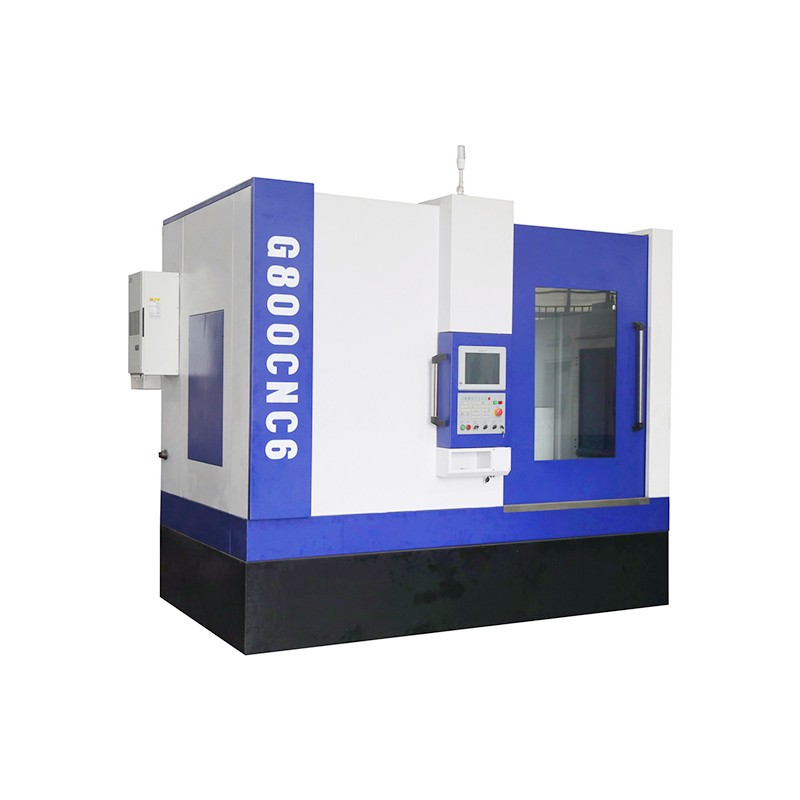The Basics of Gear Manufacturing
- 19 setembro, 2022
- 5013 views

Gear Hobbing
Gear Hobbing is a machining process for gear cutting, cutting splines, and cutting sprockets on a hobbing machine, which is a special type of milling machine. The teeth or splines of the gear are progressively cut into the material (a flat, cylindrical piece of metal) by a series of cuts made by a cutting tool called a hob. Compared to other gear forming processes it is relatively inexpensive but still quite accurate, thus it is used for a broad range of parts and quantities. The hob is basically a worm with gashes cut across it to produce the tooth face cutting edges. All motions in hobbing are rotary, and the hob and gear blank rotate continuously as in two gears meshing until all teeth are cut. Hobbing is one of the most fundamental processes in gear manufacturing. Its productivity and versatility make hobbing the gear manufacturing method of choice for a majority of spur and helical gears.
Gear Shaping
Gear shaping is a process for generating gear teeth by a rotating and reciprocating a pinion-shaped cutter. The cutter axis is parallel to the gear axis. The cutter rotates slowly in timed relationship with the gear blank at the same pitch-cycle velocity, with an axial primary reciprocating motion; to produce the gear teeth. A train of gears provides the required relative motion between the cutter shaft and the gear-blank shaft. Cutting may take place either at the down stroke or upstroke of the machine. Because the clearance required for cutter travel is small, gear shaping is suitable for gears that are located close to obstructing surfaces such as flanges. The tool is called gear cutter and resembles in shape the mating gear from the conjugate gear pair, the other gear being the blank.
Gear shaping is one of the most versatile of all gear cutting operations used to produce internal gears, external gears, and integral gear-pinion arrangements. Advantages of gear shaping with pinion-shaped cutter are the high dimensional accuracy achieved and the less expensive tools. The process is applied for finishing operation in all types of production rates.
When the surface finish and dimensional accuracy are not accurate enough for certain applications, several finishing operations are available, including the conventional process of shaving, and a number of abrasive operations, including grinding, honing, and lapping.
How Gear Manufacturing Can Overcome the Backlash Problem
In some gear systems, too much or too little backlash can be a problem. Fortunately, there are a few techniques we can use when manufacturing gears to insure proper backlash. Too much backlash and the gear mesh is sloppy, too little backlash and the gears have a potential to bind. Because of this it is very important to know how the requirements for the gear system and optimize the backlash for the best performance.
In case you aren’t familiar, gear backlash refers to both an error in motion when two or more gears are moving, as well as the small spaces between gears that are responsible for those errors. Backlash tends to occur in all systems but is most critical in systems where gears reverse direction. The more backlash, the more “slop” when a system reverses direction.
Imagining a System Without Backlash
It’s hypothetically possible to have a system with gears that reverse their momentum, with no backlash. In this system, the gears would need to be manufactured and designed absolutely perfectly. You wouldn’t be able to use any lubricant, and you wouldn’t be able to allow any kind of thermal expansion or retraction. Unfortunately, it’s practically impossible to construct such a scenario. So instead, we need to focus on optimizing backlash.
In some applications, backlash isn’t much of a concern. But for applications where minimizing backlash is a priority, there are some techniques we can use to reduce or eliminate the problem. For example, you can split some gears on a plane perpendicular to their axes, then use the two halves with springs to provide more torque to the system. We can also taper teeth in its axial direction, and then allow the system to take up slack by letting the gear slide in that same direction.
Ultimately, we can also reduce the impact of the backlash problem by doubling down on our commitment to producing top-quality gears.
We are a gear hobbing machine supplier. If you are interested in our products, please contact us now!
- Categoria:
- Produtos
- Sem comentários


